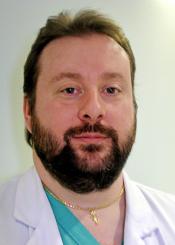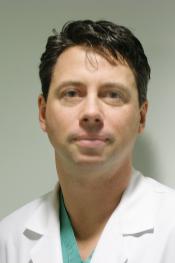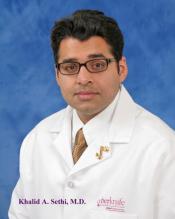
Neurosurgery
UHS Neurosurgery provides the only comprehensive brain and spine care program in the region. As leaders in the field for more than 40 years, UHS ranks as one of the top neurosurgical centers in New York state.
Neurosurgery is a specialized branch of medicine focusing on the surgical treatment of disorders affecting the brain, spine, and peripheral nerves. Neurosurgeons are equipped to handle complex conditions requiring intricate and precise surgical interventions. At UHS, our Neurosurgery team offers cutting-edge care, combining advanced technology with expert skill to provide patients with the best possible outcomes. UHS Neurosurgery offers a comprehensive range of neurosurgical services, addressing both common and complex neurological conditions.
When to call Neurosurgery?
Recognizing when to call neurosurgery can be crucial for patient outcomes. Here are some scenarios when contacting a neurosurgeon at UHS is essential:
Degenerative Spine Conditions: Severe cases of spinal stenosis, herniated discs, or other degenerative spine disorders causing significant pain, weakness, or dysfunction may benefit from neurosurgical procedures to alleviate symptoms and restore function.
Brain Tumors: Diagnosis and treatment of a brain tumor typically involves neurosurgical consultation to determine the appropriate surgical approach for biopsy or removal, as well as to develop a comprehensive treatment plan.
Severe Head Trauma: If a patient suffers a significant head injury, especially with symptoms like loss of consciousness, severe headache, vomiting, or neurological deficits (e.g., weakness, numbness, or difficulty speaking), immediate evaluation by a neurosurgeon is necessary to assess and treat potential brain injuries. UHS Wilson Medical Center is the regions only NYS Department of Health designated Trauma Center, capable of treating the most seriously injured patients.
Spinal Cord Injury: Trauma to the spine, resulting in symptoms such as loss of movement, sensation, or bladder/bowel control, requires urgent neurosurgical consultation to prevent permanent damage and improve recovery prospects.
Intracranial Hemorrhage: Patients presenting with symptoms of a brain bleed, such as a sudden severe headache, changes in mental status, or focal neurological deficits, need prompt neurosurgical intervention to manage the bleeding and alleviate pressure on the brain.
Hydrocephalus: This condition, characterized by an accumulation of cerebrospinal fluid within the brain, often requires surgical intervention to drain the excess fluid and relieve intracranial pressure.
Chiari Malformation: Patients with this structural defect in the base of the skull and cerebellum may experience symptoms like headaches, balance issues, and coordination problems, necessitating neurosurgical evaluation and potential decompression surgery.
Essential Tremor: Patients with this condition experience shaking or trembling of their hands, voice, or face. Medications are not always effective in treating the tremor. UHS exclusively offers Focused Ultrasound, an effective, non-surgical treatment option for patients with Essential Tremor in Upstate NY.
At UHS, our Neurosurgery team is dedicated to providing expert, patient-centered, compassionate care, utilizing the latest technology and techniques to deliver the best possible outcomes for patients. Whether dealing with traumatic injuries, complex brain and spine conditions, or chronic neurological disorders, UHS is committed to advancing the field of neurosurgery and improving the lives of those they serve.
UHS News
-
 UHS unveils expanded Upper Front Street locationDecember 15, 2025
UHS unveils expanded Upper Front Street locationDecember 15, 2025On the morning of Monday, December 15, UHS held a ribbon cutting to mark the opening of the expanded UHS Upper Front Street location. The event saw a great turnout, celebrating an exciting new chapter for care in our community.
-
 New CT scanner at UHS Chenango Memorial Hospital offers advanced diagnosticsDecember 15, 2025
New CT scanner at UHS Chenango Memorial Hospital offers advanced diagnosticsDecember 15, 2025UHS Chenango Memorial Hospital’s Diagnostic Imaging team recently celebrated the installation of a state-of-the-art CT scanning machine, marking a significant advancement in diagnostic capabilities for patients in the region.
-
 Inside look at expanded UHS Upper Front Street locationDecember 11, 2025
Inside look at expanded UHS Upper Front Street locationDecember 11, 2025Monday marks the opening of Primary Care, Physical Therapy & Rehabilitation, and Laboratory services at the renovated location, with the new Pediatrics space scheduled to open in February.
-
 2026 Summer Nurse Externship application window now openDecember 08, 2025
2026 Summer Nurse Externship application window now openDecember 08, 2025UHS is thrilled to re-offer our Summer Nursing Externship Program in 2026. This is an exclusive opportunity for current nursing students to jump into the world of healthcare and gain hands-on experience.















